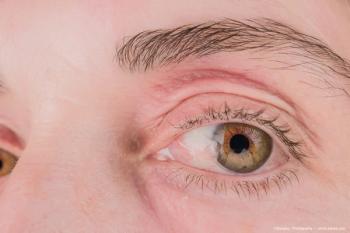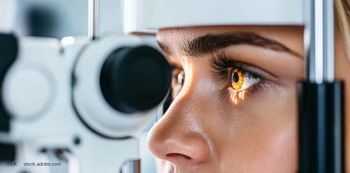
- Ophthalmology Times: September/October 2025
- Volume 50
- Issue 5
Ophthalmic innovation by the decades: The 2000s
Key Takeaways
- Femtosecond lasers and wavefront-guided LASIK improved precision, safety, and visual outcomes in refractive surgery.
- Anti-VEGF therapies, including pegaptanib and bevacizumab, revolutionized treatment for retinal diseases like AMD and diabetic retinopathy.
Explore groundbreaking advancements in eye care from the 2000s, including LASIK innovations, anti-VEGF treatments, and enhanced imaging technologies.
The 2000s were dominated by advances in refractive surgery technologies including wavefront-guided LASIK, the femtosecond laser for refractive and cataract surgery, the introduction of effective anti-vascular endothelial growth factor (VEGF) drug treatments for retinal diseases, advances in imaging technologies, and the approval of new intraocular lens (IOL) types for cataract patients.
LASIK
Femtosecond laser
This technology introduced in 2001 revolutionized LASIK by replacing the mechanical microkeratome for flap creation, enhancing precision, and reducing complications that occur in LASIK surgery. Laser-created flaps were highly accurate and safer than could be achieved with the microkeratome, making this the new standard for flap creation.1
The femtosecond laser has revolutionized corneal and refractive surgery with respect to its increased safety, precision, and predictability over traditional microkeratomes. The advantages of bladeless femtosecond-assisted LASIK over conventional microkeratome-assisted LASIK include reduced dry eye symptomatology, reduced risk of flap button hole or free cap formation,2,3 and a gentler approach with minimal or no transient visual loss (blackout period) due to close physiologic maintenance of intraocular pressure throughout the procedure, especially in femtosecond laser platforms that employ a curved contact surface. This configuration allows better approximation of the corneal surface and reduced suction pressure compared to flat contact surface laser interfaces and traditional microkeratomes.1
The femtosecond laser also offered the ability to consistently create thinner, more precise flaps, which increased the pool of patients who could be considered eligible to undergo a LASIK procedure.1
Wavefront-guided LASIK
The procedure, approved in 2002, facilitated customized LASIK procedures. This technology creates a detailed three-dimensional map of the eye to correct subtle vision imperfections, ie, higher order aberrations, that older methods could not address. By addressing the unique aberrations, visual outcomes are improved and side effects reduced.
The aim was to achieve vision beyond 20/20 for most patients by correcting refractive errors and higher order aberrations.4
During the 2000s, refinements in the LASIK procedure continued that focusedon enhancing the accuracy of correcting refractive error (myopia, astigmatism, hyperopia) and improving the quality of day and night vision.5
Medical advances in treatments for retinal diseases
In the early 2000s, scientists began creating drugs that interfered with retinal disease processes. These drugs block a protein called VEGF. Before their creation, people with wet AMD were almost certain to develop severe vision loss or blindness.6
One of the first drugs was photodynamic therapy (PDT) with verteporfin (Visudyne, Bausch & Lomb), which wasapproved in 2000 to slow the progression of wet age-related macular degeneration (AMD). PDT was the first treatment to effectively prevent the loss of visual acuity in patients with subfoveal choroidal neovascularization secondary to AMD, pathological myopia, or presumed ocular histoplasmosis syndrome.7
Pegaptanib (Macugen, EyeTech Pharmaceuticals, Inc.) was approved in 2004, marking the first approved anti-VEGF therapy for neovascular AMD.8Pegaptanib binds to a subset of VEGF-A isoforms and reduced the average number of letters lost in neovascular AMD by 50% at 54 weeks.9 Unlike the standard of care at the time, Visudyne, pegaptanib was effective for treating all forms of neovascular AMD.9
Bevacizumab (Avastin, Genentech, Inc.), initially developed to treat cancer, began to be used as an off-label treatment of neovascular AMD due to its effectiveness.10,11Bevacizumab is a full-length, humanized monoclonal antibody directed against all the biologically active isoforms of VEGF-A. In 2005, Philip Rosenfeld, MD, and colleagues at the Bascom Palmer Eye Institute, Miami, reported the first successful off-label use of an intravitreal injection of bevacizumab for a patient with wet AMD. Researchers noticed a similarity in the underlying mechanism of VEGF-driven vessel growth in cancer and in wet AMD.
Following approval by the FDA, bevacizumab was used in ophthalmology to treat various types of neovascular diseases. Since the first report on the effects of bevacizumab was published in 2005, by 2007, more than 100 publications shared the experience with bevacizumab in ophthalmology.12
The reports of the drug’s dramatic success led to the rapid and widespread adoption of intravitreal bevacizumab in clinical practice worldwide. Its low cost compared to similar FDA-approved drugs for the eye made it a highly attractive option.
The drug was instrumental in stopping the progression of wet AMD in the majority of patients and some of patients were able to regain vision lost to AMD.
This success spurred a great deal of interest and research into new drugs and led to the development of several successful treatments for wet AMD, diabetic retinopathy (DR), and retinal vein occlusion.13
During the same decade, intravitreal injections of anti-VEGF therapies were also found to be beneficial for DR and diabetic macular edema (DME): Studies in the 2000s confirmed the effectiveness of anti-VEGF medications, administered as injections into the eye, for improving visual acuity in patients with DME. This led to a new standard of care, offering the possibility of reversing vision loss in some cases and slowing the progression of DR in others.14
The decade also ushered in observations about positive effects of vitamins on AMD. The National Eye Institute-sponsored Age-Related Eye Disease Study found that high-dose antioxidants and zinc could significantly slow the progression of AMD.15 At the study’s end in 2001, the researchers concluded that high levels of antioxidants and zinc can reduce by 25% some individuals risk of progression to wet macular degeneration.
Diagnostics and imaging
Optical coherence tomography (OCT) improvements
Significant advancements were made in the speed and resolution of OCT, a non-invasive imaging technique. Wider bandwidth light sources were introduced in 2001, allowing for submicrometer resolution.16The transition from time-domain (TD-OCT) to Fourier-domain (FD-OCT) was the most impactful development. TD-OCT used a moving reference mirror that limited image acquisition speed, while FD-OCT systems, which emerged in the early to mid-2000s, detected reflected light signals simultaneously.16
Spectral-domain OCT,first applied to retinal imaging around 2002, used a spectrometer to achieve acquisition speeds of 27,000 to over 50,000 A-scans/second by the mid-2000s. The increased speed and higher resolution (down to 3–7 µm) allowed for detailed three-dimensional retinal mapping and precise analysis of the retinal layers.16
Adaptive optics imaging enabled high-resolution imaging of the human retina in real-time, improving the detection of aberrations.In 2003, researchers reported combining adaptive optics with OCT to correct for the eye's natural aberrations. This improved transverse resolution but was limited by a narrow depth of focus.17
When high-frequency ultrasonic imaging was developed it was considered by many to be the next frontier in ultrasound. It has many clinical applications ranging from imaging the eye and skin to small animal imaging. Small animal imaging has recently generated intense interest for evaluating the efficacy of drugs and gene therapy. Commercial high-frequency scanners often termed “ultrasonic biomicroscope” (UBM), all use mechanically scanned single element transducers at frequencies between 30 to 60 MHz with a frame rate of 30 frames/second or lower. To alleviate problems with UBMs, such as mechanical motion and fixed focusing issues, high frequency linear arrays and imaging systems in the 20- to 50-MHz range were developed. These changes enabled visualization of microscopic structures in the eye's anterior segment.18
In glaucoma patients, UBM can help differentiate many glaucoma types, evaluate the anatomy of the angle or the position and shape of the iris.19,20
UBM can measure the dimensions of the anterior segment structures21 and classify glaucoma patients as primary closed-angle cases, including congenital, juvenile, or adult onset, secondary closed angle, or even certain types of secondary open angle glaucoma. UBM also can identify several subtypes of glaucoma.22-24 UBM also proved valuable in evaluation of tumors and masses and for observing changes in eyes filled with silicone oil.
Surgical advances
Significant advances in cataract surgery that developed during the 2000s transformed the procedure from one that simply restored sight to one providing refractive correction. Key developments involved less-invasive surgical methods, IOLs, and computer-assisted technologies that improved patient outcomes and reduced recovery time.
IOLs
In 2000, the pioneering Array lens (Allergan and later Abbott Medical Optics) was the only approved multifocal lens, while better multifocals, accommodative, and phakic lenses were still in their investigational stages. Some lens designs, such as the early one-piece versions, were prone to complications and some IOL materials left much to be desired regarding biocompatibility. Toric IOL technology was in its infancy, and the first aspheric lens was not approved until 2004. Injectors were still a work in progress in 2000. Today, they are used routinely in the vast majority of cataract surgeries. They have helped advance small-incision surgery and greatly improved surgical efficiency and safety.25
Femtosecond laser-assisted cataract surgery, first performed in 2008, uses the Nd:glass lasers to create focused, ultrashort pulses at a 1,053-nm wavelength to photodisrupt tissue by creating cavitation bubbles. This laser can be used to create corneal incisions, relaxing incisions, capsulotomy, and lens fragmentation, which can be later removed by phacoemulsification. It was performed in the first human eye in Hungary in 2008, and it integrates artificial intelligence, and promises to revolutionize cataract surgery, in terms of precision, reproducibility, accuracy, safety, and limiting collateral damage and inflammation.26
Vitrectomy advances
Significant advances in vitrectomy during the 2000s primarily was centered on the widespread adoption of microincision vitrectomy surgery, which facilitated shorter operative times, less pain, and faster visual recovery.27
This period saw a major shift from 20-gauge instruments to smaller 23- and 25-gauge systems, which led to numerous improvements in surgical outcomes and patient recovery.27
Other surgical advances in the 2000s included introduction of the chandelier illumination and probes.27
Glaucoma management
Selective Laser Trabeculoplasty (SLT)
This glaucoma treatment was approved for commercial use in the US in 2001. It uses a lower energy laser than older methods, reducing the risk of side effects and theoretically allowing for repeat procedures.28
SLT, with its low-energy pulses to treat the trabecular meshwork and improve aqueous outflow, incites less tissue destruction when compared to its predecessor, argon laser trabeculoplasty, which was first introduced in 1979.28
Other noteworthy advances
Genomics Research
Launched in October 1990 and completed in April 2003, the Human Genome Project’s signature accomplishment, ie, generating the first sequence of the human genome, provided fundamental information about the human blueprint, which has since accelerated the study of human biology and improved the practice of medicine.29
Antibacterial agents
The fourth-generation fluoroquinolones, moxifloxacin and gatifloxacin, were introduced in 2003 and promised improved spectrum of activity and delayed development of microbial resistance. Although these topical agents have recently been introduced in commercial form in 2004, there was already a growing body of evidence showing excellent potency in the war on ocular infections.30
References
Aristeidou A, Taniguchi EV, Tsatsos M, et al. The evolution of corneal and refractive surgery with the femtosecond laser. Eye Vis (Lond). 2015;12. doi:
10.1186/s40662-015-0022-6 Salomao MQ, Wilson SE. Femtosecond laser in laser in situ keratomileusis. J Cataract Refract Surg. 2010;36:1024–32. doi: 10.1016/j.jcrs.2010.03.025.
Morshirfar M, Gardiner JP, Schliesser JA, Espandar L, Feiz V, Mifflin MD, et al. Laser in situ keratomileusis flap complications using mechanical microkeratome versus femtosecond laser: retrospective comparison. J Cataract Refract Surg. 2010;36:1925–33. doi: 10.1016/j.jcrs.2010.05.027,
Faktorovich EG, Ibach M. 30 years of LASIK. Optometry Times. 2019;11.
Schallhorn SC, Farjo AA, Huang D, et al. Wavefront-guided LASIK for the correction of primary myopia and astigmatism a report by the American Academy of Ophthalmology. Ophthalmology.2008;115:1249-61.doi: 10.1016/j.ophtha.2008.04.010.
Medeiros S, Mukamal R. New treatments for age-related macular degeneration. EyeSmart. American Academy of Ophthalmology. 2024;
https://www.aao.org/eye-health/tips-prevention/promising-new-treatments-amd#:~:text=In%20the%20early%202000s%2C%20scientists,eye%20on%20a%20regular%20basis Keam SJ, Scott LJ, Curran MP. Verteporfin : a review of its use in the management of subfoveal choroidal neovascularization. Drugs.2003;63:2521-54. doi: 10.2165/00003495-200363220-00016.
Adamis AP, Brittain CJ, Dandekar A, Hopkins JJ. Building on the success of anti-vascular endothelial growth factor therapy: a vision for the next decade.
Eye . 2020;34:1966–1972.Gragoudas ES, Adamis AP, Cunningham ET Jr., Feinsod M, Guyer DR; VEGF Inhibition Study in Ocular Neovascularization Clinical Trial Group. Pegaptanib for neovascular age-related macular degeneration. N Engl J Med. 2004;351:2805–16.
Rosenfeld PJ, Mosfeghi AA, Puliafito CA. Optical coherence tomography findings after an intravitreal injection of bevacizumab (Avastin) for neovascular age-related macular degeneration. Ophthalmic Surg Lasers Imaging. 2005;36:331–5.
Rosenfeld PJ, Fung AE, Puliafito CA. Optical coherence tomography findings after an intravitreal injection of bevacizumab (Avastin) for macular edema from central retinal vein occlusion. Ophthalmic Surg Lasers Imaging. 2005;36:336–9.
Grisanti S, Ziemssen F.Bevacizumab: off-label use in ophthalmology. Indian J Ophthalmol. 2007;55:417–420. doi:
10.4103/0301-4738.36474 Advances in retina: a look back at AMD treatments then and now. Retina Associates of Western New York. 2025; https://retinaassociatesofwny.com/advances-in-retina-a-look-back-at-amd-treatments-then-and-now/
Shah AR, Gardner TW. Diabetic retinopathy: research to clinical practice. Clin Diabetes Endocrinol. 2017;3:9. doi:
10.1186/s40842-017-0047-y Age-Related Eye Disease Study Research Group (October 2001).
A randomized, placebo-controlled, clinical trial of high-dose supplementation with vitamins c and e, beta carotene, and zinc for age-related macular degeneration and vision loss . AREDS report no. 8.Arch Ophthalmol . 2001;119:1417–1436.doi :10.1001/archopht.119.10.1417 Fujimoto J, Swanson E. The development, commercialization, and impact of optical coherence tomography. Invest Ophthalmol Vis Sci. 2016;57:OCT1–OCT13. doi:
10.1167/iovs.16-19963 Burns SA, Elsner AE, Sapoznik KA, Warner RL, Gast TJ. Adaptive optics imaging of the human retina. Prog Retin Eye Res. 2019;68:1-30.
Shung KK. High-frequency ultrasonic imaging. J Med Ultrasound. 2009;17:25-30;
https://doi.org/10.1016/S0929-6441(09)60012-6 Casanova FH, Adan CB, Allemann N, de Freitas D. Findings in the anterior segment on ultrasound biomicroscopy in Maroteaux-Lamy syndrome. Cornea. 2001;20:333–338. doi: 10.1097/00003226-200104000-00019.
Bhatt DC. Ultrasound biomicroscopy: An overview. J Clin Ophthalmol Res. 2014;2:115–123. doi: 10.4103/2320-3897.130549.
Maslin JS, Barkana Y, Dorairaj SK. Anterior segment imaging in glaucoma: An updated review. Indian J Ophthalmol. 2015;63:630–640. doi: 10.4103/0301-4738.169787. doi: 10.4103/0301-4738.169787.
Münnich S, Lieb WE, Jahn R, Grehn F. Ultrasound biomicroscopy findings in various forms of glaucoma. Ophthalmologe. 1995;92(4):526–530.
Ishikawa H, Schuman JS. Anterior segment Imaging: ultrasound biomicroscopy. Ophthalmol Clin North Am. 2004;17(1):7–20. doi: 10.1016/j.ohc.2003.12.001.
Silverman RH. High-resolution ultrasound imaging of the eye – a review. Clin Experiment Ophthalmol. 2009;37(1):54–67. doi: 10.1111/j.1442-9071.2008.01892.x.
Helzner J. IOL Technology: A decade of progress. Ophthalmology Management. 2010;May 1.
Nadeem S. Cataract surgery: historical devices, modern innovations, and future perspectives. Expert Rev Med Devices. 2024;21:991–994.
https://doi.org/10.1080/17434440.2024.2419477 Komur B. Advances in vitreoretinal surgery. In: Frontiers in Ophthalmology and Ocular Imaging. Ziaei F, ed. InTech Open, Rijeka, Croatia. 2019. DOI: 10.5772/intechopen.83019
Droste AP, Newman-Casey PA. Emerging glaucoma treatments: are we seeing an improvement in adherence? Expert Rev Ophthalmol. 2023;18:101–111. doi:
10.1080/17469899.2023.2199981 National Human Genome Research Institute.
https://www.genome.gov/human-genome-project#:~:text=Launched%20in%20October%201990%20and,improved%20the%20practice%20of%20medicine .Mah FS. Fourth-generation fluoroquinolones: new topical agents in the war on ocular bacterial infections. Curr Opin Ophthalmol. 2004;
15:316-320.
Articles in this issue
about 2 months ago
Transformative advances in vision research: It’s the scienceabout 2 months ago
Anti-VEGF innovations in retinal disease: From molecules to medicineabout 2 months ago
From numbers to meaning: Graphical reporting in refractive surgeryabout 2 months ago
Evolving glaucoma therapy: A new era of interventional strategiesabout 2 months ago
Proactive strategies and sustained delivery advance glaucoma careabout 2 months ago
Periorbital rejuvenation: Past, present, and nextabout 2 months ago
The mechanics of presbyopia: From muscle movement to functional visionabout 2 months ago
Rethinking punctal occlusion as an option for allergic conjunctivitisNewsletter
Don’t miss out—get Ophthalmology Times updates on the latest clinical advancements and expert interviews, straight to your inbox.













































.png)


